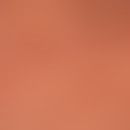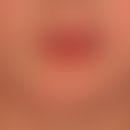Synonym(s)
HistoryThis section has been translated automatically.
DefinitionThis section has been translated automatically.
Hereditary, X-linked dominant epidermal nevus syndrome with hemiplegic verrucous nevus (so-called lateralization pattern of a cutaneous mosaic), ipsilateral limb malformations and anomalies of internal organs. The acronym "CHILD" was introduced by Happle in 1980 and is an acronym for "congenital hemidysplasia with ichthyosiform nevus and limb defects".
You might also be interested in
EtiopathogenesisThis section has been translated automatically.
X-linked dominant inheritance. The underlying genetic defect is due to mutations in the NSDHL gene, which is mapped to Xp28. This gene codes for the NAD(P)H steroid dehydrogenase-like protein, which is involved in the metabolism of cholesterol and is a lethal factor for male embryos. The syndrome is therefore almost exclusively observed in females. Affected mothers can only pass the syndrome on to their daughters (affected male embryos die in early pregnancy). Healthy sons are only born if the "healthy" X chromosome was inherited from the mother.
ManifestationThis section has been translated automatically.
LocalizationThis section has been translated automatically.
ClinicThis section has been translated automatically.
Skin: Variably extensive, sharply defined, reddened, ichthyosiform verrucous plaques with waxy, white-yellowish to brownish scaling. Sometimes the entire half of the body is affected with the exception of the face. Frequent onychodystrophy. A pronounced ptychotropy, a preferential infestation of the body folds, is detectable.
Skeletal system: aplasia/hypoplasia of the phalanges, shortening of the long tubular bones, possibly radiologically detectable spatter-like epiphyseal calcifications in infancy.
Internal organs: Cardiovascular, renal, pulmonary, endocrine anomalies possible (e.g. unilateral renal agenesis).
HistologyThis section has been translated automatically.
Differential diagnosisThis section has been translated automatically.
TherapyThis section has been translated automatically.
Skin symptoms: therapy with 0.05% Vit. A acid cream R256 or ointments containing 5-10% urea. Circumscribed foci can be surgically removed if necessary. Since this is a cosmetic therapy, the use of systemic retinoids (neotigasone) cannot be advised in children. Recently, therapeutic successes with topical simvastatin/cholesterol ointment have been described.
Progression/forecastThis section has been translated automatically.
LiteratureThis section has been translated automatically.
- Caldas H et al. (2005) Placental defects are associated with male lethality in bare patches and striated embryos deficient in the NAD(P)H steroid dehydrogenase-like (NSDHL) enzyme. Mol Genet Metab 84: 48-60
- Christen M et al. (2020) NSDHL Frameshift Deletion in a Mixed Breed Dog with Progressive Epidermal Nevi. Genes (Basel) 11:1297.
- Falek A, Heath CW Jr. Ebbin AJ, McLean WR (1968) Unilateral limb and skin deformities with congenital heart disease in two siblings: a lethal syndrome. J Pediat 73: 910-913
- Gleason TR et al. (2004)Perceived vulnerability: a comparison of parents and children. J Child Health Care 8: 279-287
- Happle R, Koch R, Renz W (1980) The CHILD syndrome: congenital hemidysplasia and ichthyosiform erythroderma and limb defects. Eur J Pediatr 134: 27-33
- Happle R, Karlic D, Steijeln PM (1990) CHILD syndrome in mother and daughter. Dermatology 41: 105-108
- Happle R et al (1996) CHILD syndrome in a boy. Am J Med Genet 62: 192-194
- Hebert AA, Esterly N et al (1987) The CHILD syndrome. Arch Dermatol 123: 503-509
- Kontras SB, Kataria S, Eaton AP et al (1975) Congenital unilateral ichthyosiform erythroderma with ipsilateral hypoplasia upper and lower limbs. Birth Def 11: 333-334
- Leuthard F et al. (2019) A missense variant in the NSDHL gene in a Chihuahua with a congenital cornification disorder resembling inflammatory linear verrucous epidermal nevi. Anim Genet 50:768-771
- Porter FD (2003) Human malformation syndromes due to inborn errors of cholesterol synthesis. Curr Opin Pediatr 15: 607-613
- Shear CS, Nyhan WI, Frost P et al. (1971) Syndromes of unilateral ectromelia, psoriasis, and central nervous system anomalies. Birth Def Orig Art Ser VII: 197-203
Incoming links (8)
Chondrodysplasia calcificans congenita; Congenital hemidysplasia with ichthyosiform erythroderma and limb defects; Congenital unilateral ichthyosiform erythroderma with ipsilateral hypoplasia of upper and lower limbs; Mosaic cutaneous; Naevus; NSDHL gene; Syndromes of unilateral ectromelia, psoriasis, and central nervous system anomalies; Tretinoin cream hydrophilic 0.025/0.05 or 0.1% (nrf 11.101.);Outgoing links (7)
Mosaic cutaneous; Mould penning flintstone mims syndrome; NSDHL gene; Onychodystrophy (overview); Ptychotropism; Scale ; Tretinoin cream hydrophilic 0.025/0.05 or 0.1% (nrf 11.101.);Disclaimer
Please ask your physician for a reliable diagnosis. This website is only meant as a reference.






